Edit: I didn't realize that it is the Animates (in segue in storyboard) and animated in pushViewController() which does the job.
How to smooth transition to next view when we tap on a row in table view. I want to achieve similar smooth transitioning effect as Apple's Settings app. Right now my transition happens immediately as soon as row is touched.
On Apple's settings app when you tap on a row on Settings menu, it first highlights the row then smoothly transitions to next view. This is what I want to achieve.
I've searched but can't find any relevant solution. Any help?
Following is my code for row select
func tableView(_ tableView: UITableView, didSelectRowAt indexPath: IndexPath) {
let cell = tableView.cellForRow(at: indexPath)
tableView.deselectRow(at: indexPath, animated: true)
//.....
self.navigationController?.pushViewController(destinationVC, animated: false)
}
